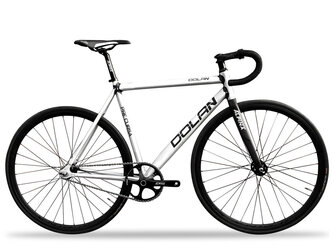The strava power value comes from an algorithm, and an algorithm can't guess. So it's better than guesswork.
What it will be is consistent. If you keep things like bike weight and so on constant it will give you a consistent estimate of your power. It may not be accurate - and you should never use it for comparison with values from another source. But it will be consistent with itself, so if you want to measure progress you can compare it against itself. It can be an interesting number but is limited in its application.
Same goes for lots of algorithm derived values like calories, moving speed, total elevation climbed etc. They won't necessarily be accurate but they will be consistent so you can use them to compare with other Strava rides.
But as
@Sittingduck says if you really want to know your power output with any accuracy you'd need a power meter, but these are very expensive. Another route would be to use a turbo trainer, or something like a Wattbike in a gym. These will give you a more accurate figure. But - as noted above - you shouldn't compare the Strava algorithm derived values with this.
Alternatively you could go down the route of training with a heart rate monitor. This will measure your effort levels and will probably be just as effective as training with power but is waaaaaay cheaper than a power meter.
If you're really interested in this kind of stuff there are some really good web based calculators that you can enter various parameters into and it will provide the power required for an x kg rider with a drag coefficient of y to ride up a gradient of z at a certain speed. I can't remember the names of any of them but they are easy to find.
Asking "is a power output of X good" isn't really a meaningful question. What does "good" mean? What is good for one person may not be good for another. It's a very personal thing. Bear in mind power figures are often given in Watts/kg, where kg is the weight of the rider. Professional racing cyclists often push in excess of 6 W/kg up big climbs. That's a
lot
How much did you enjoy the ride? If you enjoyed it, then yes - it's good.


